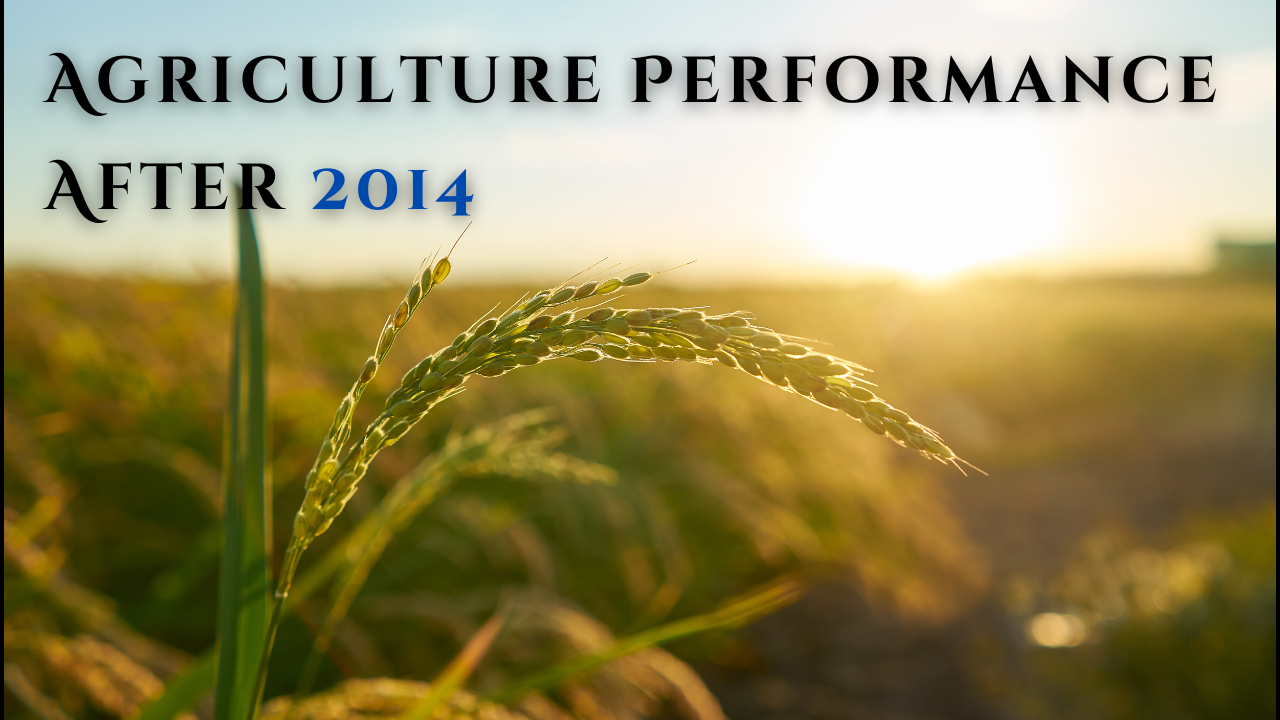Font size:
Print
Agriculture Performance After 2014
Context:
A NITI Aayog paper highlights that India’s farm sector has seen improved growth over the past two decades, with a notable increase during the ten years of the Narendra Modi-led NDA government.

Key Insights from the Report:
- Agriculture’s annual GVA growth rose from 2.9% (1984-2004) to 3.7% under the NDA (2014-2024), largely driven by growth in the livestock and fisheries sectors.
- Traditional crop production, however, showed slower progress. Horticulture grew by 3.9%, while regular field crops i.e non -Horticulture crop lagged at 1.6%.
- Crops vs. Livestock & Fisheries: Crop output growth slowed to 2.3% during 2014-2023, compared to 3.4% under the UPA. In contrast, livestock and fisheries grew at 5.8% and 9.2%, respectively.
- Subsector Growth: Highest growth rates came from poultry (9.2%), fishing (9.1%), eggs (6.6%), and milk (5.8%).
- Regional Performance: Thirteen states saw agriculture GVA rise by over 4%, driven mostly by livestock and fisheries. Crop growth exceeded 5% in only Madhya Pradesh and Telangana.
- Laggards: Punjab, Haryana, and West Bengal saw lower agricultural growth, especially in crop subsectors.
- The other laggards have been cotton, jute, tobacco, tea and coffee, with the growth rates being moderate in cereals and oilseeds to decent in pulses and sugarcane.
Reasons for the above Variation
|
Inference from the Report:
- Non-Crop-led Growth: The farm sector’s overall better growth performance during the Modi-led NDA compared to that under UPA has been primarily courtesy of animal and aqua as opposed to conventional crop agriculture.
- Limited Participation: Only 53% of farmers earn from livestock, and 6.5% from horticulture, while 44.2% rely on traditional crops.
- Field Crop Challenges: Despite MSP coverage, crops like oilseeds and pulses lag in yield, and cotton has stagnated post-Bt adoption.
- Demand and Technology Over Subsidies: Demand-side factors and tech innovations are more effective for growth than government price or subsidy interventions.
Drawbacks of the Report:
- Inconsistencies in Output Estimates: Official production data show significant growth in cereals and milk from 2004-05 to 2022-23. However, National Sample Survey Office (NSSO) consumption data suggests a disparity, with household consumption remaining flat.
- Cereal Production vs. Consumption Gap: The gap between reported cereal production and household consumption widened from 29.5 mt (2004-05) to 151 mt (2022-23).
- Milk Production Doubts: Milk production reportedly jumped 2.5 times, but NSSO data shows no corresponding rise in consumption.
Key drivers of agricultural growth in India during the Modi government’s ten-year rule:
Key Challenges faced by Agriculture and Allied Industry in India:
Recommendations to Enhance Agriculture and Allied sector Growth
|
Subscribe to our Youtube Channel for more Valuable Content – TheStudyias
Download the App to Subscribe to our Courses – Thestudyias
The Source’s Authority and Ownership of the Article is Claimed By THE STUDY IAS BY MANIKANT SINGH





